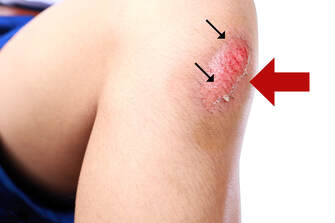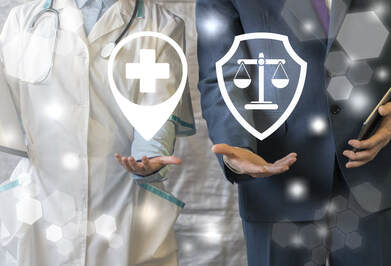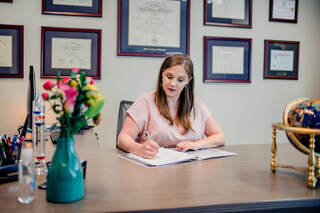 Types and Causes of Blunt Force Trauma Blunt force trauma happens when a part of the body strikes, or is struck by, a blunt object. Generally speaking, blunt objects that cause injury have much greater surface area relative to sharp objects that cause injury. With sharp-force trauma (detailed blog post is in the works) the cutting edge only needs a small surface area to cause injury. Common objects causing blunt force trauma include vehicles, fists, sidewalks, roads, baseball bats, and hammers. Common blunt-force injuries include abrasions, avulsions, contusions, & lacerations. Abrasions Abrasions occur when a part of the body scrapes across another surface, generating enough friction to disrupt skin integrity. Sometimes the skin and the surface causing the abrasion come into contact briefly (think of the accidentally scraping your upper arm against a brick wall, or falling onto your outstretched hand) and other times the contact with the surface can be prolonged (such as that of a body being dragged underneath a car and scraping against the road). Abrasions can happen due to the skin having contact with either a hard or a soft surface, although obviously more force would be needed to cause an abrasion with a soft surface. The examples above describe the contact of skin with a hard surface. An example of a soft surface causing an abrasion would be ligature marks on the wrists of someone restrained with a shoelace. The direction in which the force was applied can be determined by which part of the wound margin demonstrates more skin “beading.” The last part of the wound to have contact with the offending surface will show more skin beading that the rest. In the photo, the skin beading visible on the left-most aspect of the wound margin (red arrow) indicates that the direction of force likely followed the direction of the black arrows. Beaded skin sloughs off soon after injury so early photos of injuries are key. Matter embedded in an abrasion or laceration can also help determine mechanism of injury. For example tiny, cube-shaped fragments of glass in an abrasion following a motor vehicle accident indicate the glass was from a side-window (made of tempered glass) rather than a windshield (made of laminated glass, which shatters into longer, flatter shards). This can help determine an individual is being truthful about their position in the vehicle during a motor vehicle accident case. Images below this box show wounds, which may be disturbing to some readers. Click read more (below box to right) to continue.
0 Comments
 Attorneys: Wondering what it will be like to get started with a Legal Nurse Consultant? Following is a summary of the information you can have ready to be prepared for that initial call. The first thing to consider is what you want the Legal Nurse Consultant (LNC) to accomplish. Have you already accepted this case? Or are you considering taking a case and you want the LNC to review for merit? An LNC may be able to give you an estimate for a merit review based on information you can provide over the phone before you even send the medical records. They will need certain information, however, including number of pages & type of medical records (100 pages of hospital records is way different than 100 pages of psychotherapy records). He or she may also want to know what you- as the attorney- view as the strengths and weakness of the case, as well as what the allegations are. If you’ve already accepted the case, the LNC will need the above information and will also evaluate what your needs are: what services can they provide you? Are you looking for a timeline? Gantt chart? Demonstrative evidence? A chronology? An expert witness? The LNC can explain what services they offer and tailor them to meet your needs. It’s important to make the LNC aware of the expected date of mediation or trial and any other deadlines you may have. He or she will also want to know how the medical records will be received (through ShareFile, DropBox, physical copies, thumb drive etc). Inform your LNC if you have a set budget for LNC services. Many LNCs prefer to work on a retainer basis in order to guarantee check-ins with the attorney to make sure the attorney is satisfied with the work being done. To avoid miscommunication you should provide the Legal Nurse Consultant with the contact information for their primary point of contact in your office- will he be hearing from a paralegal by phone? From a case manager by email? Finally, you should let the LNC know up front if you have any specific preferences in the formatting of your work product. Many attorneys have preferences with regard to font size, typeface, whether documents should be Bates stamped, etc. While they’ll be happy to make changes for you if you don’t realize a preference until later, if you already know what your preferences are, go ahead and let us know! If you have any questions regarding services, fees, or anything else it’s always a good idea to write them down before your call. If you’re ready to organize, streamline and clarify the medical records associated with your legal case, get in touch with us today for a free thirty minute phone consultation! |
Archives
February 2022
AuthorI'm Jennifer Pettigrew and, true story, I first became interested in Legal Nurse Consulting after my auto insurance company was sued following a car accident in which I was found to be at fault. I wasn't sued until after the statute of limitations was up but an exception was made and the plaintiff alleged that because of being rear-ended he was on pain medications chronically which caused him to develop diabetes and become blind. As a nurse I knew that Diabetic retinopathy cannot develop over the course of just a few years but rather is a complication that develops after several years of untreated or poorly treated diabetes. The case was settled by the insurance company before ever going to court for several million dollars, but from that point on I have been interested in the difference medical professionals could make in legal proceedings.
|
Search by typing & pressing enter


 RSS Feed
RSS Feed